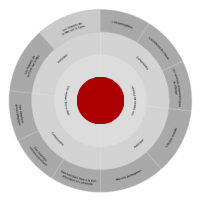1.Third Nature, an Emerging Concept
Designed to describe categories of physical or abstract objects that transcend traditional distinctions between nature and culture, the concept of Third Nature calls for profound reflection on the interaction between humans, nature and technology. It suggests a new approach to understanding our relationship with the environment and the ethical implications of integrating technology into our daily lives.
This concept offers a holistic vision, integrating environmental, technological, cultural and aesthetic aspects, and calls for a redefinition of our relationship with the natural and man-made world.
1.1 Definition
Third Nature is a philosophical and ecological idea that seeks to rethink the relationship between The Human being and Nature. The concept is based on a re-evaluation of the traditional opposition between nature (First Nature) and culture (Second Nature):
- First Nature: Wilderness in its original state, unaltered by human activity and therefore often idealized as pure and unspoiled.
- Second Nature: Environments shaped by humans, whether built-up (cities, infrastructures) or artificially created (farmland). This second nature is often perceived as a degradation of the First Nature.
- Third Nature: Harmonious and symbiotic interaction between natural systems and human creations, integrating elements of sustainability, adaptive technology and ecological innovation.
1.2 Historical Background and Variety of the Concept
Although this concept seems to have emerged in response to contemporary environmental challenges, as early as 1541, Jacopo Bonfadio and Bartolomeo Taegio[1], two Italian Renaissance writers, used the concept ‘terzera natura’ to describe the way in which art and nature come together in a garden through landscape aesthetics created by garden designers. It is worth pointing out, in this regard, that this concept took shape in the gardens of the Muslims in Andalusia[2] and the Persian gardens[3], which highlighted an intimate connection between humans and nature, by capturing the beauty of the material world.
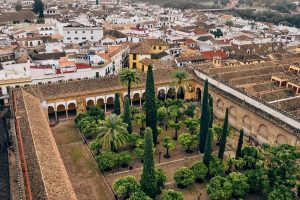
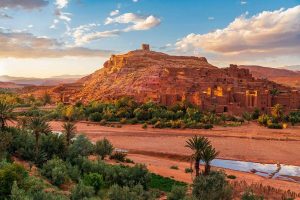
This approach was echoed by Thomas E. Beck in 2002[4] in his analysis of Renaissance gardens, joining the current of thought in which humans understand their role as a force for transforming the planet and seek to find ways for the first two natures to coexist more sustainably.
This movement is illustrated, in particular, by Grégoire Bignier’s ‘La Troisième nature’ (2023), which reminds us that ‘renewed and urgent reflection is needed on the part of architects to imagine architecture in the face of the new challenges of the 21st century’[5], in the tradition of the Renaissance.
Since the 1990s, reflecting various thoughts on post-modernity, the concept has been taken up in different works, offering a wide variety of meanings:
- In McKenzie Wark’s article ‘Third Nature’[6] (1994), the third nature is a new layer superimposed on the second nature (cities, infrastructures supporting productive flows). This layer is generated by information flows whose landscape (cyberspace, postmodernism) overlaps that of former physical territories (deterritorialization). In this respect, it aligns with the Teilhardian vision of the noosphere[7].
- In ‘Third nature: the Co-evolution of human behavior, culture, and technology’, psychologist William A. Johnston[8] (2005) proposes another quasi-cosmogonic approach: First nature is matter (emerged from the big bang around 12 to 15 billion years ago); Second nature is life (appeared around 4 billion years ago); Third nature designates ideology (a coherent system of ideas) and cultural artifacts (such as institutions and technology). It is assumed to have emerged with the shift to symbolic thinking and agrarianism[9] around 40 000 years ago. Third nature has imbued the human mind with powerful ideas (memes[10]), such as the idea of progress.
- ‘Third Nature or the End of Origins’ by Celeste Olalquiaga[11] (2010) goes even much further, proposing as a ‘third nature’ that which succeeds the first nature of the human being (sensory and organic) and his second nature (social and cultural). This new category would include technological manipulations of nature, such as clones, which, although indistinguishable from the original, have neither the biological value (genetic descent) nor the cultural value (identity).
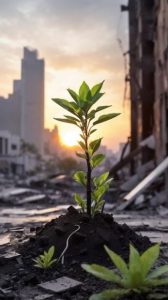
- In ‘The Mushroom at the End of the World’ by anthropologist Anna Lowenhaupt Tsing (2017), Third Nature is that which “manages to live despite capitalism”[12]. The expression here refers to the nature that proliferates in urban wastelands, in the interstices of intensive agriculture, or on the outskirts of capital cities, adapted to the degradation of ecosystems, the disappearance of useful predators or the spread of exotic species … This third nature is therefore the mutant one that will survive the first (wild) and second (human-disturbed) natures.
1.3 Pertinence of the Concept
Generally speaking, the concept of ‘third nature’ invites us to reflect on the interaction between humans and nature, and on the limits and potentialities of this relationship. Like post-modernism, it conveys a growing awareness both of mankind’s relative position in Creation and of the unique moment in human history we are living through, from which are emerging a wild, mutant and unpredictable nature (including climate) under the effect of the Anthropocene, and a world of technological artifacts (cyberspace, clones) devoid of natural roots. This shift towards a third nature calls for reconsideration of our origins, our place in the universe and our demiurgy.
More specifically, this concept can promote both a less destructive relationship with the natural world (permaculture, urban nature …) and a more thoughtful use of technology (cloning, virtualization), raising questions such as:
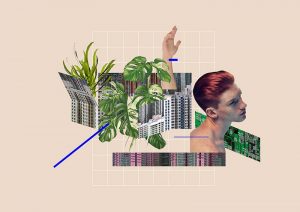
- What can mutant species teach us, particularly in terms of pollutant management (biomimicry)?
- How can we design urban development plans that harmoniously integrate the natural environment?
- What are the ethical implications of integrating technology and nature into everyday life, and how can we address these issues responsibly?
The concept of Third Nature thus provides fertile ground for exploring innovative ideas and rethinking humanity’s relationship to the world.
1.4 Morocco and the Pertinence of the Concept
The concept prompts us to rethink the relationship of citizens and decision-makers to the environment and technology, particularly in light of the transformations Morocco is undergoing and its ambitions in terms of sustainable development.
This approach enables us to gain a deeper understanding of natural cycles and local ecosystems, and to strengthen our thinking on the judicious use of technological advances to support development, with a view to sustainability, adaptation to climate change and the design of nature-friendly development schemes.
To achieve this third harmonious nature, it is essential to take into account the needs of the environment while meeting the needs of modern society. This means, for example, adopting sustainable agricultural practices that preserve soil fertility and minimize impacts on water resources, or adhering to the principles of biodiversity conservation (preservation of natural habitats, protection of endangered species, peaceful coexistence between humans and wildlife).
Ultimately, achieving a balanced third nature (between humans, the environment and technology) should be a social and economic imperative for every country.
[1] Greco Aulo, Le Lettere, ed., Rome, Bonacci, 1978, p. 96; the term “terzera natura” is taken from Bartolomeo Taegio, La Villa (Milano, 1559), p. 155.
[2] Al-khatīb, Ibn, and al. The history of the Mohammedan dynasties in Spain: extracted from the Nafhu-t-tíb min ghosni-l-Andalusi-r-rattíb wa táríkh Lisánu-d-Dín Ibni-l-Khattíb. Oriental translation fund of Great Britain and Ireland, sold, 1840.
[3] Graves, Margaret S. and Junod, Benoît (ed.). Architecture in Islamic Arts: Treasures of the Aga Khan Museum. Aga Khan Trust for Culture, 2011.
[4] Beck, Thomas E. Gardens as a ‘Third Nature’: The Ancient Roots of a Renaissance Idea. Studies in the History of Gardens & Designed Landscapes, 2002, vol. 22, no 4, p. 327-334.doi:10.1080/14601176.2002.104352.
[5] Bignier , G. La troisième nature : l’architecture face au défi climatique. KUBIK Editions. 2023. ISBN 978-2-35083-081-0
[6] Wark, McKenzie. Third nature. Cultural Studies, 1994, vol. 8, no 1, p. 115-132.
[7] Noosphere means “a (human) thinking layer of the Earth, constituting a new kingdom, a specific and organic whole”: National Center of Textual and Lexical Resources. https://www.cnrtl.fr/definition/noosph%C3%A8re
[8] Johnston, William A. Third nature: The Co-evolution of Human Behavior, Culture, and Technology. Nonlinear Dynamics, Psychology, and Life Sciences, 2005, vol. 9, no 3, p. 235-280.
[9] Agrarianism also refers to a political doctrine that directs a state’s economic activity towards agriculture and animal husbandry (agrarian states since the settlement of hunter-gatherers).
[10] An element of culture (taken here in the sense of civilization) which may be regarded as transmitted by non-genetic means, especially by imitation” according to Oxford English Dictionary.
[11] Olalquiaga, Celeste. The Third Nature or the End of Origins. Tumultes, 2010, no 1, p. 163-176.
[12] Lowenhaupt Tsing, Anna. The Mushroom at the End of the World: On the Possibility of Life in Capitalist Ruins, trad. Philippe Pignarre, pref. by Isabelle Stengers, Paris, La Découverte/ Les empêcheurs de penser en rond, 2017, 415 p.

